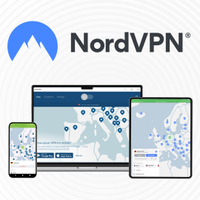What is a SOCKS proxy?
Lots of VPNs offer a SOCKS5 proxy service, but what is it?

With so many providers battling it out for the top spot in our best VPN rankings, it’s increasingly difficult for providers to stand out from the competition. The simplest way to do so is by cooking up new services and features – and an increasing number of VPNs are offering not just advert and malware blocking, but password managers, cloud storage, and identity theft protection.
One tool offered by a lot of premium providers is something called a SOCKS proxy. The most up-to-date version of this is SOCKS5. What does this mean? A SOCKS proxy is a handy way to spoof your location and conceal your real-world IP address. However, a proxy server doesn’t come with the same encryption you would find using a VPN.
A fair question, then, is to wonder why you’d want to use a proxy over a VPN? Let’s take a detailed look at what a proxy server is, talk about the different versions, and just where and when you’d want to use one.
NordVPN – from $3.09 per month
The best VPN overall
NordVPN is our top-rated overall - and for plenty of good reasons. It's the best streaming VPN on the market, able to unblock virtually every streaming platform out there, and is more than fast enough to keep up with HD movie marathons. Plus, its one of only a few VPNs to offer a SOCKS proxy. See for yourself with a 30-day money-back guarantee.
What is SOCKS?
Before I go on, it’s important that I clarify what I'm talking about when we're talking SOCKS – and I don’t mean the things that keep your feet warm in winter.
SOCKS is a type of internet protocol, like HTTP (for browsing the internet) or SMTP (for sending emails). It’s sometimes also called SOCKet Secure, though that isn’t the official name. It’s designed to send and receive internet data through a proxy server.
Using a SOCKS proxy will offer a basic level of online anonymity
A proxy server sits between your web browser and the sites you visit. All your internet traffic gets routed through the proxy server first before it goes out to the internet. This means that anyone trying to snoop on you and find your real-world IP address will only find the proxy’s IP address instead, keeping you safe behind it.
When traffic is routed through a third-party proxy server (via TCP) the original IP address is hidden, so using a SOCKS proxy will offer a basic level of online anonymity.
SOCKS has some benefits compared to HTTP proxies. A HTTP proxy as you might guess from the name, is designed to work with web traffic only, while a SOCKS proxy can also handle SMTP (email) traffic, FTP (file transfer) traffic, torrenting, and more.
The biggest drawback of a SOCKS proxy is that it doesn’t have the additional encryption you get while using a VPN, so your ISP and any servers you connect to can still monitor your traffic. I would still recommend using a VPN if privacy is your biggest priority.
SOCKS4 vs SOCKS5
As with many other products and protocols, there is more than one version of SOCKS out there, though these days you will only see the top VPNs offering SOCKS5 proxies. So what are the differences and is there any instance in which you might want to use the older version?
To answer the last question first, there’s not really any situation in which SOCkS4 would be a better choice than SOCKS5, and here’s a quick list to show you the main differences between the two:
- Proxy chaining: With SOCKS5 you can connect multiple proxies together. This provides an additional layer of anonymity by hiding your real IP address behind multiple proxy IP addresses.
- Authentication: A SOCKS4 proxy only supports IP-based authentication, while a SOCKS5 proxy supports three different kinds - Null authentication (where no authentication is required), username/password (only registered users can connect), and GSS-API (a type of operating system level authentication).
- Protocols: SOCKS4 proxies only support TCP connections while SOCKS5 supports both UDP and TCP.
- DNS resolution: SOCKS5 proxies have built-in support for DNS resolution which means the proxy is able to translate domain names into IP addresses without the user needing to spend time carrying out DNS lookups.
- IP addresses: A SOCKS4 proxy can only handle IPv4 addresses, while SOCKS5 can handle both IPV4 and IPv6 addresses as well.
- Subnet routing: SOCKS5 supports subnet routing. This means the SOCKS5 proxy can route traffic based on network subnets rather than individual IP addresses.
What is a SOCKS proxy used for?
So now you know what a SOCKS proxy is, and the differences between SOCKS4 and SOCKS5, but you might still be wondering why someone would want to use one over a VPN. There are still some use cases where a proxy is a simpler and more efficient option than using a VPN:
- Traffic-intensive tasks: A SOCKS proxy is a really good choice for both streaming content and P2P file sharing. There are a lot of technical reasons for this, but the biggest one is that because there’s no encryption on a proxy connection, there’s no additional delay while data is encrypted and decrypted, speeding up your downloads.
- Less prone to errors: Getting into the more technical side of things, SOCKS5 proxies are less prone to errors compared to other kinds of proxies. This is because other types of proxies usually change a part of the data packet header of a request, but the SOCKS5 proxy doesn’t change anything. This makes the network packets smaller in size, easier to process, and faster to send because the SOCKS5 proxy is just passing the data along – and this reduces the risk of a mislabelling error.
- Bypassing online blocks: By using a SOCKS proxy to hide your real-world IP address and location, you can use it to circumvent IP blocks. This will help users in repressive regimes, or where an internet block or blackout is in place, regain access to social media sites, news outlets, and messaging services.
- Compatibility: SOCKS proxies can connect over both TCP and the faster UDP protocol, while HTTP proxies only work over an HTTP connection. You can also speed up your connection by making sure that the SOCKS5 proxy server is close to your real-world location The same goes for VPNs – the closer the server is, the faster your connection will be.
- No special setup: There are no hoops to jump through or painfully in-depth FAQs to follow. Connecting to a SOCKS proxy on Windows and MacOS is as easy as going to your network settings, finding the “proxy” page, entering the address of the proxy server you want to use, and hitting save. That’s all you need to do.

After graduating from Stirling University with a qualification in Education, Shaun accidentally fell into the technology sector in the late 1990's and has stayed there ever since, working for companies such as PSINet, IBM and ProPrivacy in a variety of roles from Systems Administration to Technical Writer. Being around since the birth of the modern internet, he's seen the way that technology has expanded to become an integral part of everyday life, and how people's understanding and ability to retain any kind of privacy has lagged behind.
Shaun is a strong believer in the rights of the individual to have their personal data protected and their privacy respected – a belief made all the stronger in an age of surveillance from both governmental bodies and private companies all around the world.
He spends his spare time cooking, riding his motorbike and spending far too many hours in Star Trek Online hunting Klingons and Borg.
You must confirm your public display name before commenting
Please logout and then login again, you will then be prompted to enter your display name.
